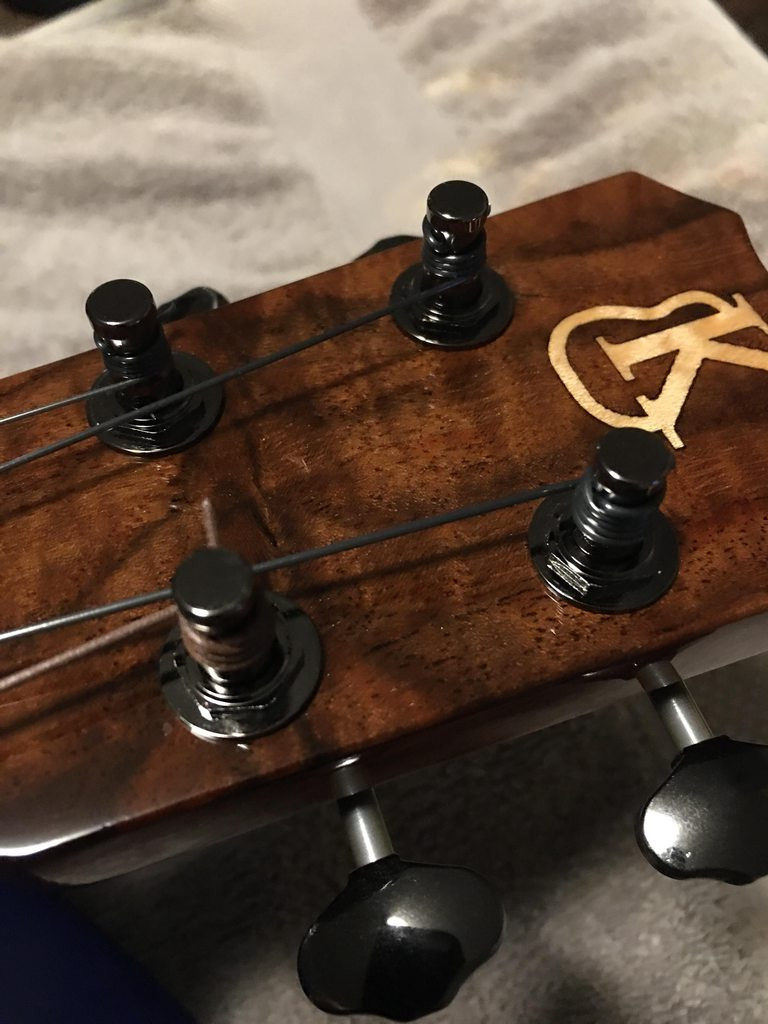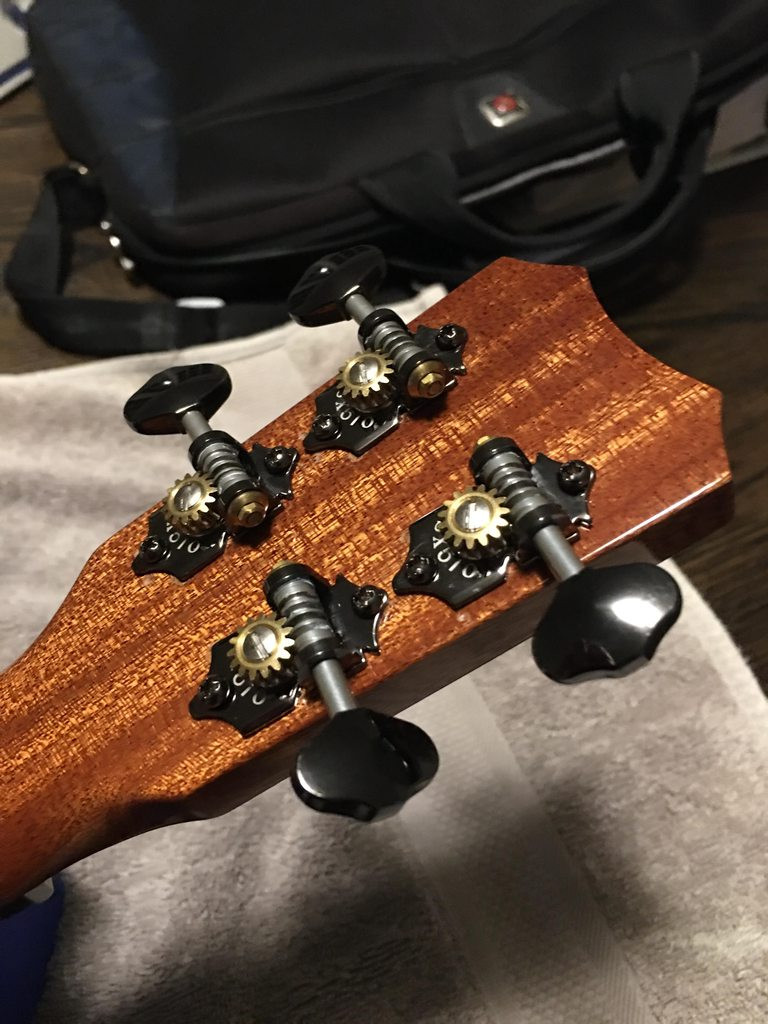Choosing the best tuners for your guitar can feel overwhelming. There’s a lot of talk about gear ratios and different brands, but what should you actually focus on when looking for an upgrade? As someone who’s spent a fair amount of time tinkering with tuning machines, I want to share some insights that go beyond the hype and help you make informed decisions.
Ratio vs. Lash: Understanding Tuner Precision
Many guitarists get caught up in the “ratio” of tuners, assuming a higher ratio automatically means better tuning stability and accuracy. While ratio does affect how much you need to turn the tuner button to change the pitch, it’s not the be-all and end-all. In fact, focusing solely on ratio can lead you to overlook a more critical factor: lash.
Lash refers to the amount of free play or slack in the tuner mechanism. It’s that frustrating dead spot where you turn the tuning peg, but the string tension doesn’t immediately respond. Cheaper tuners, often found on budget-friendly guitars, tend to suffer from significant lash. Brands like Ping and Wilkinson, while decent for their price point, can sometimes exhibit this looseness.
 Gotoh SXN510 open back tuners installed on a Kanilea ukulele headstock, showcasing their threaded bushings for enhanced stability.
Gotoh SXN510 open back tuners installed on a Kanilea ukulele headstock, showcasing their threaded bushings for enhanced stability.
This isn’t to say ratio is irrelevant. Higher ratios (like 18:1 or 21:1) offer finer adjustments, making it easier to dial in precise tuning, especially useful for intonation and alternate tunings. However, even a high-ratio tuner with excessive lash will feel imprecise and frustrating to use. Investing in quality tuners means prioritizing smooth, responsive action over just chasing a high ratio number. Remember, you generally get what you pay for. A set of budget sealed tuners around the $45 mark will perform like $45 tuners. The difference in precision between something like a Gotoh 510 and a generic tuner is immediately noticeable.
The Unsung Hero: Your Guitar Nut
Before blaming your tuners for tuning instability or perceived “lash,” take a close look at your guitar nut. Often overlooked, the nut plays a crucial role in tuning stability. A poorly cut or finished nut can cause strings, especially wound strings, to bind in their slots. This binding creates friction, leading to those annoying “pings” or “creaks” you hear when tuning. It can also make even high-quality tuners feel sloppy and unresponsive, mimicking the symptoms of tuner lash.
Ensuring your nut slots are properly shaped, smoothly finished, and lubricated is essential for smooth and accurate tuning. A well-maintained nut allows the strings to glide freely, maximizing the effectiveness of your tuners, regardless of their price point.
Choosing Quality Tuners: My Recommendation
When it comes to upgrading tuners, I’m a firm believer in Gotoh 510 sealed tuners. I’ve installed them on several of my guitars and consistently been impressed by their performance and reliability. They represent a sweet spot in the market, offering premium quality without venturing into ultra-expensive territory where diminishing returns kick in.
While there are “ultra-premium” tuners available that can cost a significant portion of the guitar’s value, for most players, the Gotoh 510s offer exceptional value and performance. My personal preference is the “Mini” 510s with an 18:1 ratio. The full-size 510s offer an even higher 21:1 ratio, but I find them visually too large for many headstocks.
Open Back Tuners: A Different Approach
Traditionally, open back tuners haven’t been my favorite. I’ve experienced some high-end guitars with open back tuners, including those from Waverly, often considered a gold standard. However, I found them to be stiffer and less accurate than expected. My theory is that the design of traditional open back tuners contributes to this.
Sealed tuners are typically clamped to the headstock on both sides, using a screw on the back and a threaded bushing on the front. Open back tuners, in contrast, are usually only secured by screws on the back of the headstock, with the tuner post passing through a pressed-in bushing on the front. This design, in my opinion, can lead to the tuning post bending slightly under string tension and binding against the bushing, affecting tuning smoothness and accuracy.
 Rear view of Gotoh SXN510 tuners on a ukulele, highlighting the secure mounting and design of these high-quality open back tuning machines.
Rear view of Gotoh SXN510 tuners on a ukulele, highlighting the secure mounting and design of these high-quality open back tuning machines.
However, Gotoh addressed this potential issue with their SXN510 and SXN510V open back tuners. These innovative tuners incorporate threaded bushings, similar to sealed tuners, effectively “clamping” the tuner to the headstock from both the front and back. I have a set of SXN510s on my Kanilea ukulele, and they are truly remarkable. They offer the smooth, precise feel of sealed Gotoh 510s, something I hadn’t experienced with open back tuners before.
The only potential downside of the SXN510s is that they are not a direct drop-in replacement for standard open back tuners. The headstock post hole needs to be slightly enlarged to accommodate the larger threaded bushing.
Final Thoughts: Tuning in to What Matters
Ultimately, choosing the “best” tuners is subjective and depends on your individual needs and preferences. However, understanding the nuances beyond just tuner ratio, such as lash and the crucial role of the guitar nut, will guide you towards making informed decisions. Whether you opt for sealed tuners like the Gotoh 510s or explore innovative open back designs like the Gotoh SXN510, focusing on quality and precision will significantly enhance your tuning experience and overall guitar playing enjoyment.
Disclaimer: The opinions expressed in this article are based on personal experience and are intended for informational purposes only.
